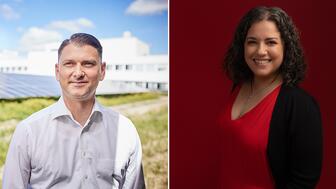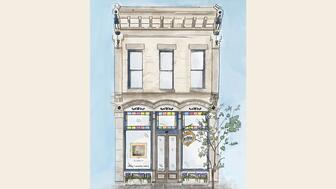Carlos Jose Hernandez and Joshua Zuazo were sentenced to life without the possibility of parole in the 2024 murder of Hussein “Sam” Murray.
When the Times doesn’t dazzle
This past winter, one of my esteemed industry colleagues included a saying in one of his blogs that I had never heard before: If you really want to be wary of the mass media, read an article on a topic about which you are particularly well informed.

On April 19, The New York Times published a story online that mentioned lab-grown, or synthetic, diamonds titled “When Diamonds Are Dirt Cheap, Will They Still Dazzle?” (It also appeared in the Times’ New York print edition the following day.)
While the overall message of the article, that technology could shift people’s perception of where value lies, is an interesting point certainly worth discussing, much of the information given in the article about lab-grown diamonds was wrong.
To begin with, the writer never seems to grasp that lab-grown diamonds are, in fact, real diamonds. They were just grown in a lab, not underground.
His column states that diamonds grown using the “new” chemical vapor deposition (CVD) process are “visually identical to mined ones” and the caption (which the author of the article might not have written) for the photo at the top of the story states: “Chemical vapor deposition can produce diamonds, created from gases, that are virtually indistinguishable from mined diamonds.”
It’s unclear whether this means indistinguishable visually or in a grading-lab sense. Either way, it’s wrong. Lab-grown diamonds are real diamonds so they, of course, are visually identical. But they can be detected by labs, which is not to say that there aren’t lab-grown diamonds that slip into the mined supply chain undetected.
The author also writes that “Tumbling prices will transform many longstanding social customs. An engagement diamond, for instance, will lose its power as a token of commitment once flawless two-carat stones can be had for only $25.”
I am not sure how he arrived at the $25 figure but it’s well-known that one of the hurdles facing lab-grown diamonds companies are the costs and time involved in producing larger diamonds. To date, they haven't been able to do so in a way that really threatens the market for mined engagement rings.
That’s why the focus, as industry analyst Ben Janowski so wisely pointed out this week when sharing the Times story on Facebook, is on lab-grown melee. That is the real problem for the industry.
And, of course, no consumer press article on the diamond industry would be complete without an arcane reference to De Beers’ monopoly and their evil hold over the diamond industry. “Renowned art
After reading the article, I wrote an email to the author, who is a professor at Cornell University, pointing out some of these inaccuracies and asking him a few questions. I will be sure to write a follow-up post if he answers.
But that’s not really the point of this blog, which wasn’t written solely for the purpose of questioning the abilities or methods of another writer.
Instead, I write to make retailers aware of the type of coverage diamonds are receiving in the consumer press, lest they be confronted with questions about this article, or any that might follow.
The Latest

Yood will serve alongside Eduard Stefanescu, the sustainability manager for C.Hafner, a precious metals refiner in Germany.

The New Orleans jeweler is also hosting pop-up jewelry boutiques in New York City and Dallas.

How Jewelers of America’s 20 Under 40 are leading to ensure a brighter future for the jewelry industry.

Set in a Tiffany & Co. necklace, it sold for $4.2 million, the highest price and price per carat paid for a Paraíba tourmaline at auction.


The jeweler’s “Deep Freeze” display showcases its iconic jewelry designs frozen in a vintage icebox.

Take luxury gifting to new heights this holiday season with the jeweler’s showstopping 12-carat sphene ring.

Roseco’s 704-page catalog showcases new lab-grown diamonds, findings, tools & more—available in print or interactive digital editions.

This year's theme is “Unveiling the Depths of the Ocean.”

In its annual report, Pinterest noted an increase in searches for brooches, heirloom jewelry, and ‘80s luxury.

Starting Jan. 1, customers can request the service for opal, peridot, and demantoid garnet.

The 111-year-old retailer celebrated the opening of its new location in Salem, New Hampshire, which is its third store in the state.

The new catalog features its most popular chains as well as new styles.

The filmmaker’s personal F.P. Journe “FFC” prototype was the star of Phillips’ recent record-setting watch auction in New York.

The new location in the Design District pays homage to Miami’s Art Deco heritage and its connection to the ocean.

Inflations, tariffs, and politics—including the government shutdown—were among consumers’ top concerns last month.

“Longtime favorite” presenters, as well as first-time speakers, will lead talks and workshops at the annual event in Tucson next year.

Silas Smith of Meridian Metalworks won the challenge with his pendant that blends Australian and American landscapes.

The sale of the 31.68-carat, sunset-hued stone was part of Sotheby’s first series of events and auctions in Abu Dhabi.

Most customers who walk into your store this month have made up their minds. Your job is to validate their choice, Emmanuel Raheb writes.

The collection features characters and motifs from Ukrainian folklore, including an enchanted mirror and a magic egg.

MatrixGold 3.11, the newest version of the jewelry design program, offers more flexibility, precision, and creative control.

The pavilion will be part of the 2026 JA New York Spring show, scheduled for March 15 to 17.

Kadet, a 1994 National Jeweler Retailer Hall of Fame inductee, helped grow the family-owned retailer in the Chicago area and beyond.

Billed as the world’s smallest wearable, Lumia Health’s new smart earrings have a health tracker subtly embedded in the back.

Don’t let those with December birthdays feel blue. Help them celebrate their month with blue zircon, turquoise, and tanzanite.

The new pink sapphire version of the piece dances with its wearer in the brand’s “Icons After Dark” holiday campaign.


























